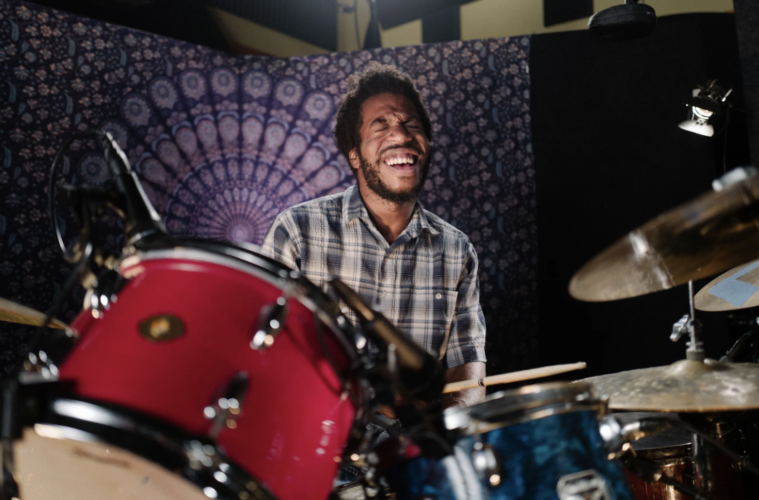In its ten previous seasons, Artbound has innovated and reinvented itself more than once, in the process rededicating itself to engagement storytelling that not only presents diverse aspects of L.A. culture, but represents the people and communities that inhabit these histories. Its 11th debuts on Wednesday, September 30, with a suite of four programs that touch on everything from rarefied fine art to underground jazz, interdisciplinary projects about our relationship to food, and the living history of one of the world’s most famous arts centers.
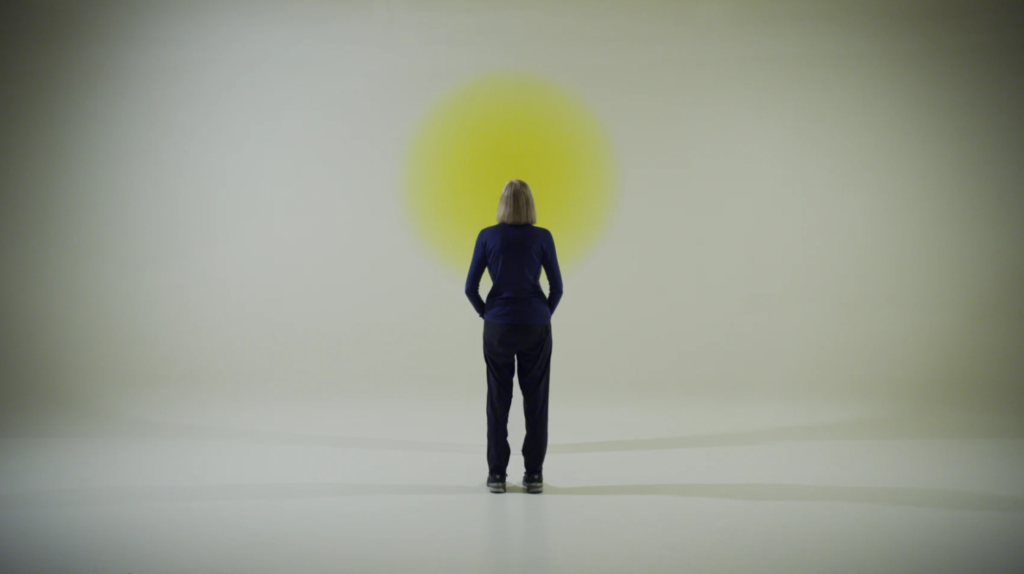
Light & Space (Artbound)
The series begins with an examination of the Light & Space movement that helped define California modern art for decades, as seen through the prism of three careers – Robert Irwin, Larry Bell and Helen Pashgian. All three artists are now of a certain age, but as the show soon makes clear, are currently doing some of the most intriguing and ambitious work of their lives. Though the story of Light & Space is well known as a tale of space-age materials and minimalist optical illusions, the in-depth interviews with these three artists central to its prominence reveal unexpected conceptual connections as well. For example, all three began their careers within the practice and techniques of painting, only to independently become enamored of the way light functions inside the work, before setting out on their unique paths to distill qualities of light into the raw material of a new art form. Their adventures in phenomenology and site-specificity would come to inspire new generations of artists to this day for whom the experience is at least as important as the object.
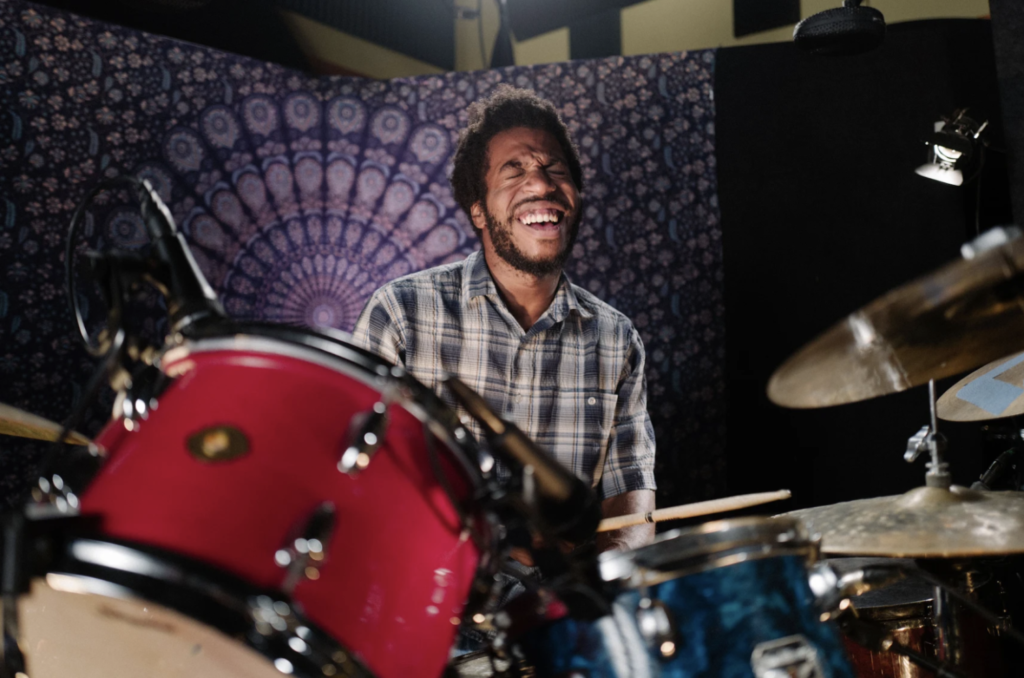
The New West Coast Sound, An L.A. Jazz Legacy (Artbound)
Pivoting to something more exuberant, organic, and emotional but no less experiential, the second episode unpacks the past, present, and future of the storied Pan Afrikan Peoples Arkestra. As drummer Mekala Session leads a new generational evolution of this nearly 60-year-old mainstay of avant-garde West Coast jazz, he looks back to his own childhood growing up with both parents “in the Ark,” and forward to what he and his peers can offer today’s community. Session and his extended music family feel a responsibility to preserve P.A.P.A.’s legacy – one that includes the presence of jazz legends from its founder Horace Tapscott to game-changers like Kamasi Washington, as well as dynamic voices from today’s hip-hop inflected community scene, like Busdriver. Their accessible underground sound operates in an expanded field of meaning that transcends styles, with deep roots in a classic Black American cultural story, the specific ambient flavors of South Los Angeles, and a healthy dose of punk-rock’s anti-establishmentarianism, with love.
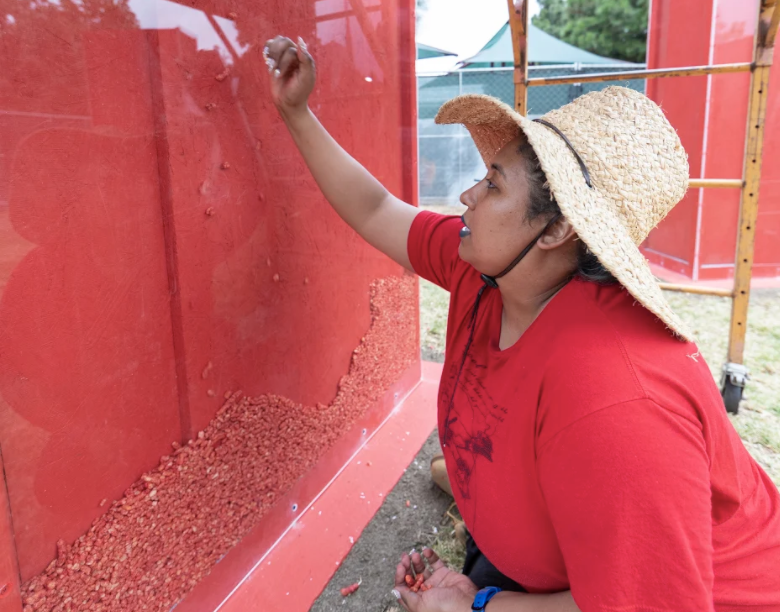
CURRENT:L.A.: Food (Artbound)
The third episode is a thoroughgoing, county-spanning overview of last year’s CURRENT:L.A. Triennial, which had as its subject an arts-driven perspective on food culture. Remember the post-modern outdoor sculptural plexi-henge of orange monoliths that were actually made of tons of Flaming Hot Cheetos? Of course you do. That project was one of dozens which each activated a park or public space with not only sculptural, but also performance-based and literal food/dining experiences – all in the service of promoting cross-cultural dialogue and shared experience. They check in with an eclectic cross-section of projects – from a free restaurant that doubled as recipe-exchange research, to an installation of 1,300 single-use food containers that interrogates the city’s confused recycling plan, a luminous pavilion sculpture that grows edible algae, a feast of indigenous food and poetry, and a troupe of singing fast food comfort demons.
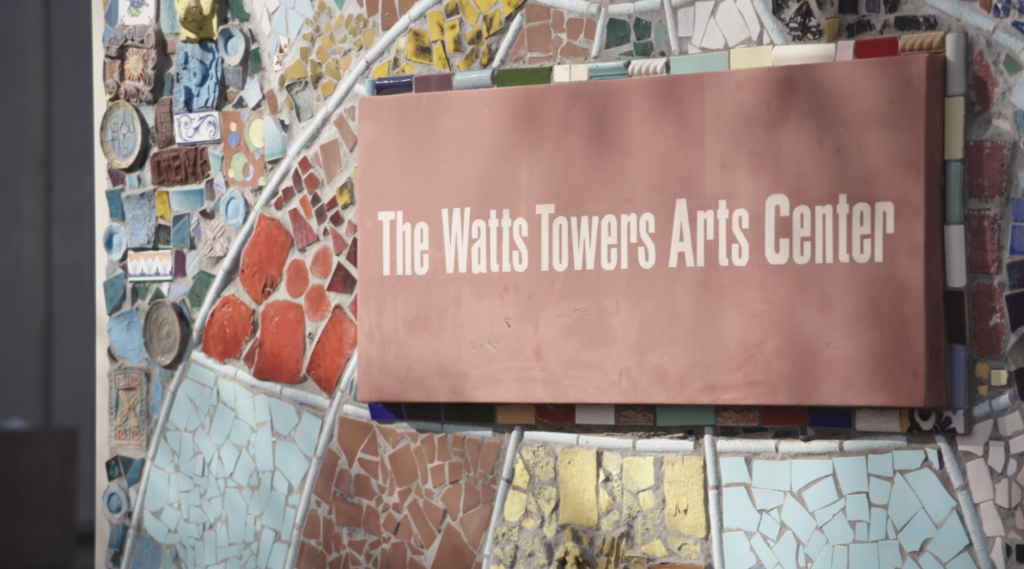
The Watts Towers Arts Center (Artbound)
The season wraps up with a historical, powerful and at times quite personal, look at the history and influence of the iconic Watts Towers Arts Center. Founded by artists in the early 1960s and from that time run by artists themselves, at and surrounding the site of Simon Rodia’s famous life’s work mosaic, the center’s full story is must-watch for anyone interested in arts education, community character, cultural expression, social justice, inventive resilience, and the value of nurturing the arts in every single neighborhood. Among the voices centered in the story are many who are better known to the world as visual artists than as administrators. But both Noah Purifoy and John Outterbridge were also among the first directors of the center; while Mark Steven Greenfield until fairly recently had been better known for his tenure there than for his own art career; Charles White and Dale Davis taught and curated; Betye Saar and David Hammons were there.

Simon Rodia’s Watts Towers (Photo: Nikki Kreuzer)
With extensive interviews and/or insightful remembrances of the contributions of these artists and many others, as well as curatorial and civic leaders like jill moniz and Joe Lewis, this hour goes far beyond the history of the center. It encompasses the entire landscape of cultural resources from the Brockman Gallery to the Communicative Arts Academy, the Black Arts Council, the annual Watts Art Festival, and in fact the total community. And it contextualizes watershed moments in the center’s history with the imperatives of the 1965 Rebellion and the 1992 Uprising and the art that was deliberately made at those inflection points to more fully express the complexities and the fullest humanity of the community’s experiences. The present-day staff and their charismatic leader Rosie Lee Hooks (the center’s current and its first female director) explain how the center is adapting for new generations, and the whole piece is set to lively, lowkey compositions commissioned for the episode by Erick Pepper Rivera – a former student at the center who is also interviewed.
Following the 9 p.m. Wednesday night broadcasts, episodes will stream on kcet.org/artbound, YouTube, and pretty much wherever you get your television from.
Advertising disclosure: We may receive compensation for some of the links in our stories. Thank you for supporting LA Weekly and our advertisers.

